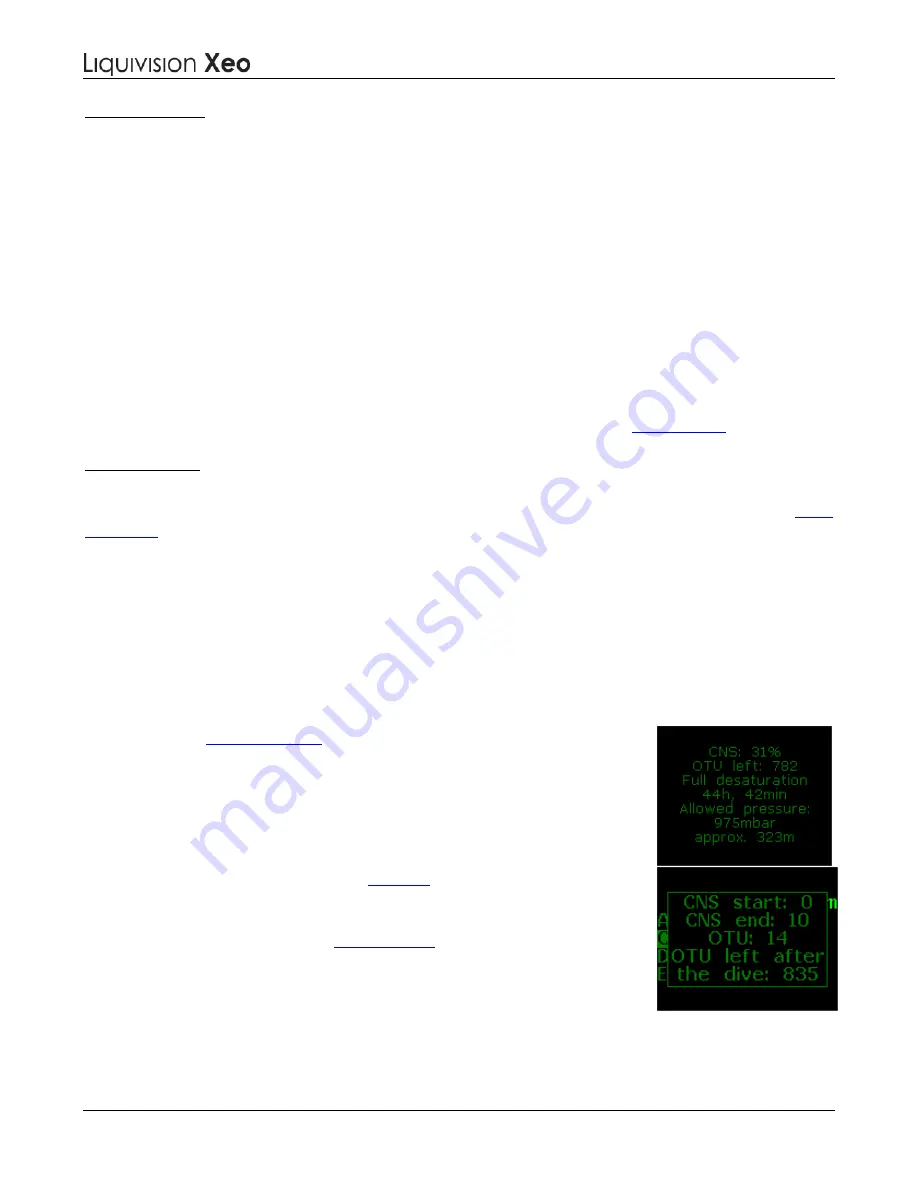
Dive Computer
User Manual
Liquivision Products, Inc
-
48
-
Revision 3.2 Software 2.58
Gradient Factors are a method used to increase the conservatism of the bare Bühlmann ZH-L16C
algorithm. Gradient Factors range from 100/100 (bare Bühlmann ZH-L16C algorithm, no added
conservatism) to 0/0 (most added conservatism). In fact, the 0/0 setting refers to decompression based
only on the oxygen window effect (no tissue compartment supersaturation).
Gradient Factors
As an example, if we consider a 30/85 GF setting, then the first value “30” is the “Low” one
(influences the deep portion of the dive), and “85” is the “High” one (influences the shallow portion of
the dive).
Decreasing the "Low" value from 100 to 30, for example, adds conservatism in the deep part of the
decompression, i.e. it might introduce additional deep stops, and lengthen the deepest stops' duration.
Decreasing the "High" value from 100 to 85, for example, adds conservatism in the shallow part of the
dive, i.e. it might substantially lengthen shallow decompression stops.
For more details on Gradient Factors, please refer to the publications in our
Bibliography
.
Apart from inert gas loading, your XEO also calculates your CNS (Central Nervous System) and OTU
(Oxygen Toxicity Unit) loading. Your current CNS/OTU levels are easy to access through the
Oxygen loading
Your
Saturation
menu item.
Both your CNS and OTU loading increases during your dive when the partial pressure of oxygen is
above 0.5 bar. On the surface, your CNS loading decreases in a similar way to the inert gas loading – it
has a 90 minute half-time. Your OTU loading, however, does not drop on the surface. Theoretically,
you can accumulate certain amount of OTU over a period of up to 30 days, and your XEO uses the US
Navy REPEX method to figure out how much more OTU can you accumulate on a given day.
You can view your CNS information and OTU remaining in two ways:
-
Access the
Your Saturation
menu item. This will show you how much
more OTU you have left for this day.
-
Plan your next dive using the
Runtime
function. After you select
“Compute Deco”, a window will pop up showing, among other values,
the OTU left for the day of that dive. If you plan a dive on the next day
(which you can do by using “
Remaining SI
” option), then the OTU left
will be displayed for day after that dive, not for today.
















































